Japan 10 Day Itinerary
Japan is a fascinating country, filled with culture, cuisine and just a little chaos. The perfect Japan 10 day itinerary includes the bright lights of Tokyo, the serene temples of Kyoto, and the craziness of Osaka, all navigated via the extremely efficient Japanese train network. Read on to discover how to plan your Japan itinerary and spend an incredible 10 days in Japan!
Note: This post contains affiliate links. This means that if you click on a link, I may receive a small commission at no additional cost to you.
Overview of 10 Days in Japan
Tokyo (4 nights): Start your Japan 10 day itinerary in bustling Tokyo, where it’s a bit of a baptism by fire into Japanese culture. Spend your days exploring Tokyo’s hectic suburbs and tranquil shrines, and take a day trip to Hakone for wonderful views of Mt Fuji. In Tokyo, stay at the mid-range Shibuya Granbell Hotel for comfort at a reasonable price in a central location.
Kyoto (3 nights): Next, spend a few days in traditional Kyoto, where you’ll be captivated by ornate temples, atmospheric neighbourhoods, bamboo forests and local markets. While in Kyoto, take a day trip to nearby gorgeous Nara to visit the free-roaming deer and exquisite temples. In Kyoto, stay at The Royal Park Hotel Kyoto Sanjo for good value in a central location close to many activities.
Osaka (2 nights): Finish your Japan itinerary in Osaka, a vibrant city famous for its nightlife and food. From Osaka, take a day trip to Hiroshima to understand the horrors of atomic warfare. In Osaka, stay at Hotel the Flag in the cute Shinsaibashi neighbourhood, for a modern funky hotel just a short walk from the bright lights of Dotonbori.
If you prefer to minimise moving around, you could stay in either Kyoto or Osaka for 5 nights as it’s a short train trip between the two cities (12 minutes on the bullet train).
Days 1-4 Tokyo
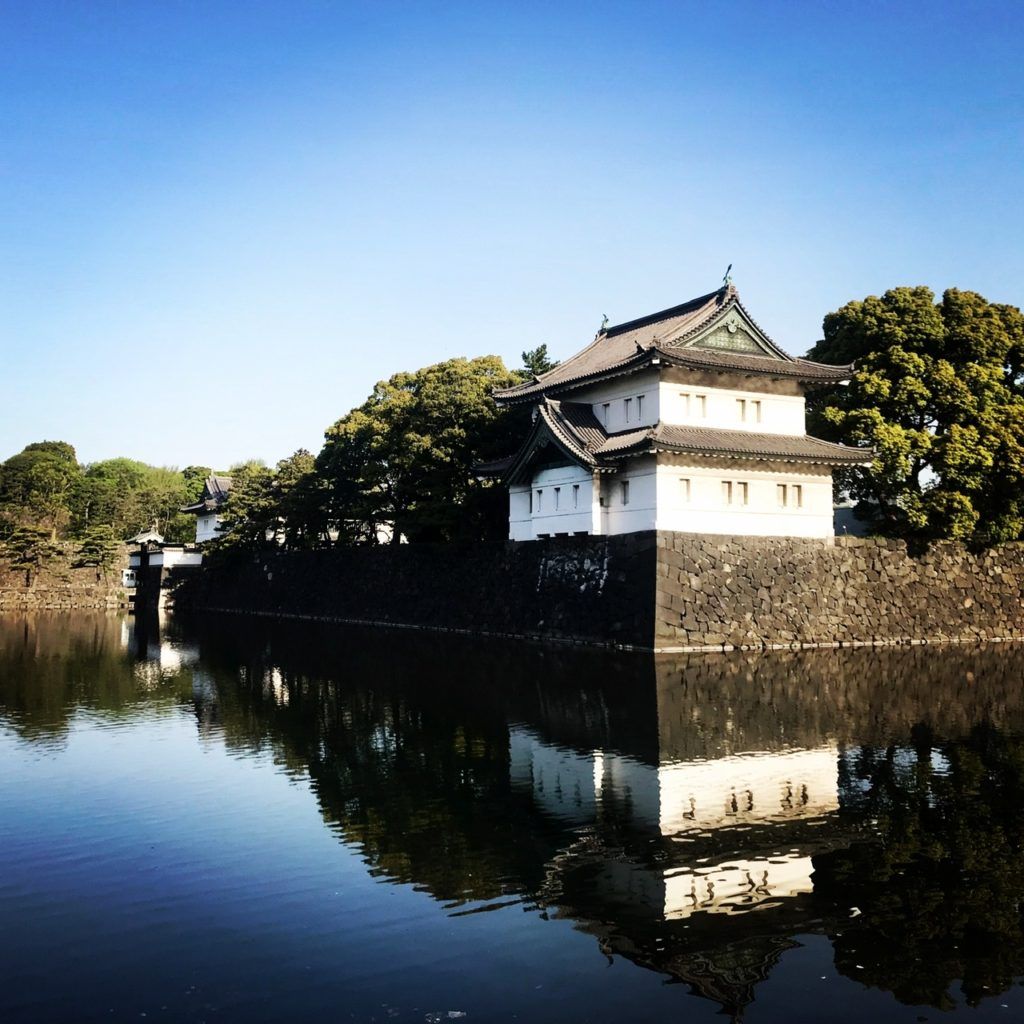
How to Get to Tokyo
Tokyo has two international airports: Tokyo Narita Airport and Tokyo Haneda Airport. Narita is primarily an international airport with a few domestic flights, and Haneda is primarily a domestic airport with an increasing number of international flights.
Narita vs. Haneda: Many people choose to fly into the more modern Haneda Airport if their preferred airlines or flights permit, as Haneda is closer to Tokyo (around 20km) than Narita (around 70km). While this is a big difference if you’re getting a taxi (which will cost you an arm and a leg!), the difference is less stark on public transport.
Narita to Tokyo: The best way to get from Narita Airport to Tokyo is to take the Narita Express Train, which gets you to Tokyo Station in around 60 minutes. The Narita Express Train is pricey (3000+ yen depending on class and end station), but is included in the Japan Rail Pass (JR Pass). An alternative way to get from Narita to Tokyo is to take the slower (90 minutes), cheaper, and less frequent Narita Line Rapid Train.
Haneda to Tokyo: It’s much cheaper to get public transport from Haneda Airport to Tokyo, and relatively quicker at around 45 minutes depending on your final destination. From Haneda International Airport, get the Keikyu Line to Shinagawa Station (15 minutes, 410 yen). From Shinagawa Station, transfer to the JR Yamanote Line which stops at Tokyo Station and other central stations (10-20 minutes, approx. 200 yen depending on station).
Before you visit Japan, read about the top 10 travel tips for visiting Japan, including more information on train travel in Japan and the JR Pass.
Tokyo Sightseeing
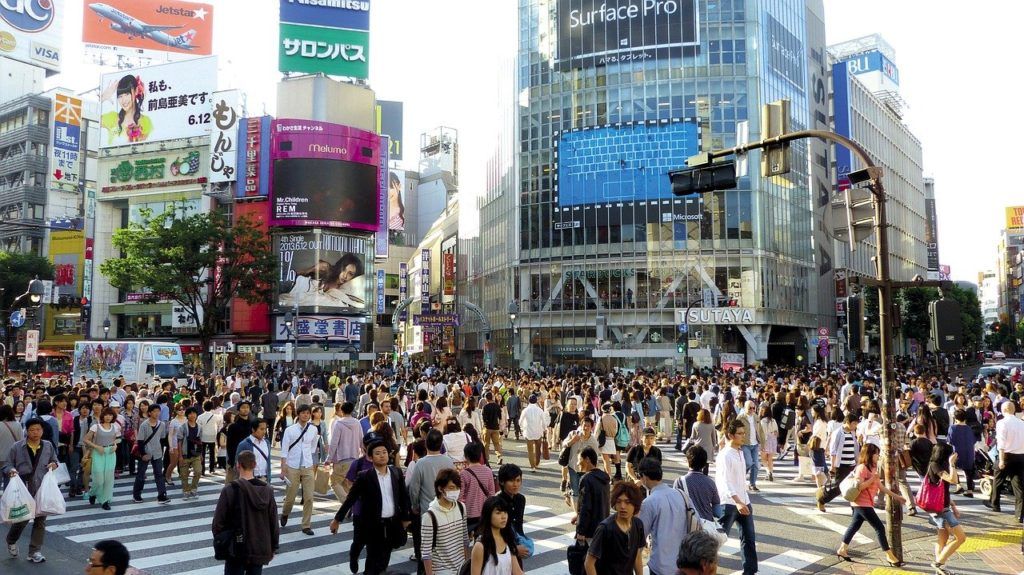
Imperial Palace
The Tokyo Imperial Palace is the residence of Japan’s Imperial Family. The palace is located in a large park with beautiful grounds and gardens. The main palace ground is closed to the public other than for reserved guided tours (Tuesdays to Saturdays), but there’s plenty to explore outside the palace. The grounds are particularly spectacular during Tokyo’s cherry blossom season (around April), where the Chidorigafuchi walking path is one of the best spots for cherry blossom viewing.
Ginza
Ginza is Tokyo’s premier upmarket shopping, dining and entertainment district. The streets are filled with high end real estate, luxury shops, art galleries, restaurants and cocktail bars. Ginza’s streets are worth exploring, even if you’re not cashed up enough to splash out on luxury goods. For a fantastic meal that won’t break the bank, check out the atmospheric little restaurants and bars built under the railway line. Ginza combines well with the nearby Imperial Palace.
Shibuya
Shibuya is a busy shopping and entertainment district. The most famous landmark in Shibuya is Shibuya Crossing, the iconic ‘scramble intersection’ in front of Shibuya Station surrounded by bright billboards, which has featured in many movies. It’s surprisingly mesmerising to find a perch above the street and watch hoards of people frantically crossing in all directions.
Shinjuku
Shinjuku is another bustling district, famous for its skyscrapers, shopping and entertainment. The Tokyo Metropolitan Government Office has free observation decks for a birds eye view of the city. Escape the chaos by visiting some of Shinjuku’s beautiful parks, including Shinjuku Gyoen, one of Tokyo’s prettiest parks and another excellent cherry blossom viewing location.
Harijuku
Harijuku is a quirky neighbourhood located in between Shinjuku and Shibuya, which is famous for its colourful youth style and ‘kawaii’ (cute) culture. Expect to see teens dressed in anime (carton costume) style, cosplay (dressed up as their favourite character), Japanese goth style and plenty of kawaii aesthetics. Harijuku also has lots of trendy shops and cute laneways to explore,
Meiji Jingu Shrine & Yogyi Park
If you’re after tranquility, then Meiji Jingu Shrine has to be one of the best places to find it in Tokyo, and is quite the contrast to the crazy streets of nearby Harijuku. Meiji Shrine is dedicated to spirits of Emperor Meiji, and features large grounds, an imposing tori gate entrance, and a museum. Yogyi Park is right next door to Meiji Shrine, which makes the whole area the perfect place to stroll for a couple of hours. The park and shrine grounds have lots of walking paths and some dense forest, making you feel like you’re a world a way from one of the planet’s biggest cities!
Day Trip to Hakone
Hakone is a great day trip or overnight trip from Tokyo, at around 1.5-2 hours each way. Hakone is a small mountain town which is famous for its spectacular views of Mt Fuji, onsen hot springs and Hakone Shrine.
Tokyo Accommodation
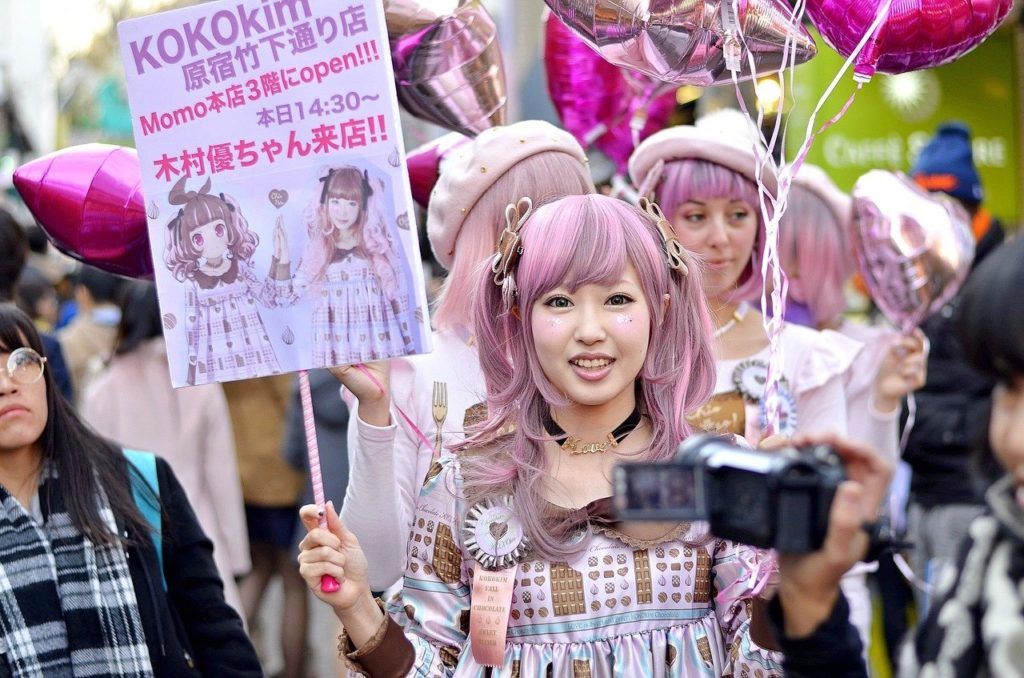
Finding a hotel in Tokyo can be a teensy bit overwhelming, as it’s a massive city with an equally massive array of accommodation. Tokyo generally has a wide range and high standard of hotels, although prices are expensive for Asia and rooms tend to be small. For tourists, I recommend staying in either Shinjuku, Shibuya or Ginza for a bustling vibe and easy access to transport, accommodation, sightseeing, bars and restaurants.
Shinjuku Accomodation
Shinjuku is an excellent choice for tourists, as it’s filled with accommodation, shopping and nightlife. This district is the perfect choice for those who love the nightlife. In the evening, Shinjuku comes alive with the neon signs that Tokyo is famous for, which advertise the district’s incredible array of bars, restaurants and entertainment venues. In addition, the Shinjuku train station is a major station, and provides easy access to most parts of Tokyo, Narita airport and other areas of Japan. Stay at the impeccable Park Hyatt Tokyo for a slice of luxury or at the mid-range JR Kyushu Hotel Blossom Shinjuku for a quality hotel at a reasonable price point.
Check Rates for the Park Hyatt: Booking.com | Agoda
Check Rates for JR Kyushu Hotel: Booking.com | Agoda
Shibuya Accommodation
Shibuya is just south of Shinjuku, and is home to the youth culture of Tokyo. As well as youth dressed in colourful and crazy clothes, Shibuya has some of the best attractions in Tokyo including busy Shibuya crossing and peaceful Meiji Jingu Shrine. Shibuya is also centrally located with a good train station. Stay at the mid-range Shibuya Granbell Hotel for comfort at a reasonable price or at The Millennials Shibuya to experience a Japanese pod hotel!
Check Rates for Shibuya Granbell: Booking.com | Agoda
Check Rates for The Millennials: Booking.com | Agoda
Ginza Accommodation
Those with more refined tastes (and a budget to match) may prefer to stay in Ginza, an upmarket district with high end hotels, restaurants, cocktail bars and shops. While Ginza may not have the charm and atmosphere of Shinjuku or Shibuya, it’s still distinctly Japanese and has some grittier laneways amongst the luxury real estate. My favourite things to do in Ginza are to eat at the little restaurants and bars under the railway line and stroll around the beautiful Imperial Palace grounds. The rather grand Tokyo Station is in Ginza, which both is a sight to behold and will get you around Tokyo in a jiffy. In fact, you can even stay at the Tokyo Station Hotel for historic luxury. If that’s a little pricey, Millennium Mitsui Garden Hotel is a lovely hotel in an excellent location (although not exactly budget – this is Ginza after all!).
Check Rates for Tokyo Station Hotel: Booking.com | Agoda
Check Rates for Millennium Garden Hotel: Booking.com | Agoda
Days 5 and 6: Kyoto
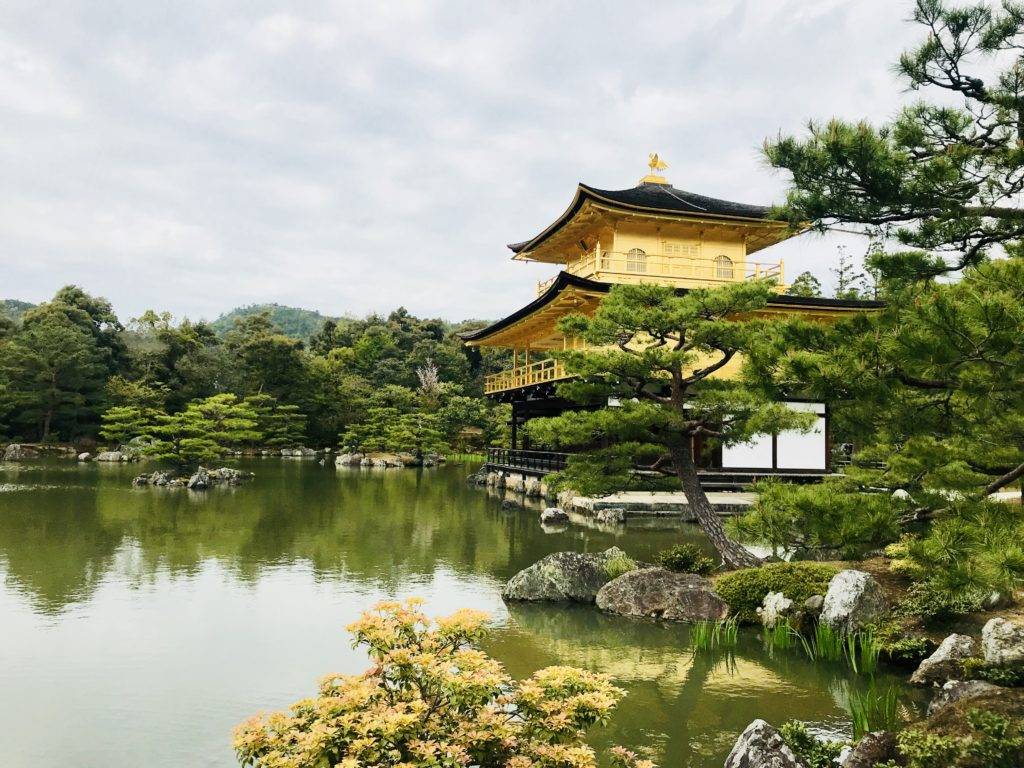
How to Get from Tokyo to Kyoto
Train: The best way to travel from Tokyo to Kyoto is to take the bullet train, known as the Shinkansen. Three trains run on the Tokaido Shinkansen line from Tokyo to Kyoto: Nozomi (2 hours 15 minutes), Hikari (2 hours 40 minutes) and Kodama (around 4 hours). For most people, the Hikari is the best option as the Hikari is included in the Japan Rail Pass (JR Pass), while the slightly faster Nozomi is not.
Flying: It’s of course also possible to fly from Tokyo to Kyoto (1 hour 40 minutes). However, the Shinkansen is faster and more convenient, particularly because the airport-city transfer times can take longer than the flight itself.
Bus: Those on a tight budget with time on their hands may also want to consider taking the bus from Tokyo to Kyoto. It’s significantly cheaper than the Shinkansen, but is also significantly longer at 6-9 hours. However, for most people planning their Japan itinerary, it will be more time and cost efficient to purchase a JR pass and do all travel by train.
Kyoto Sightseeing
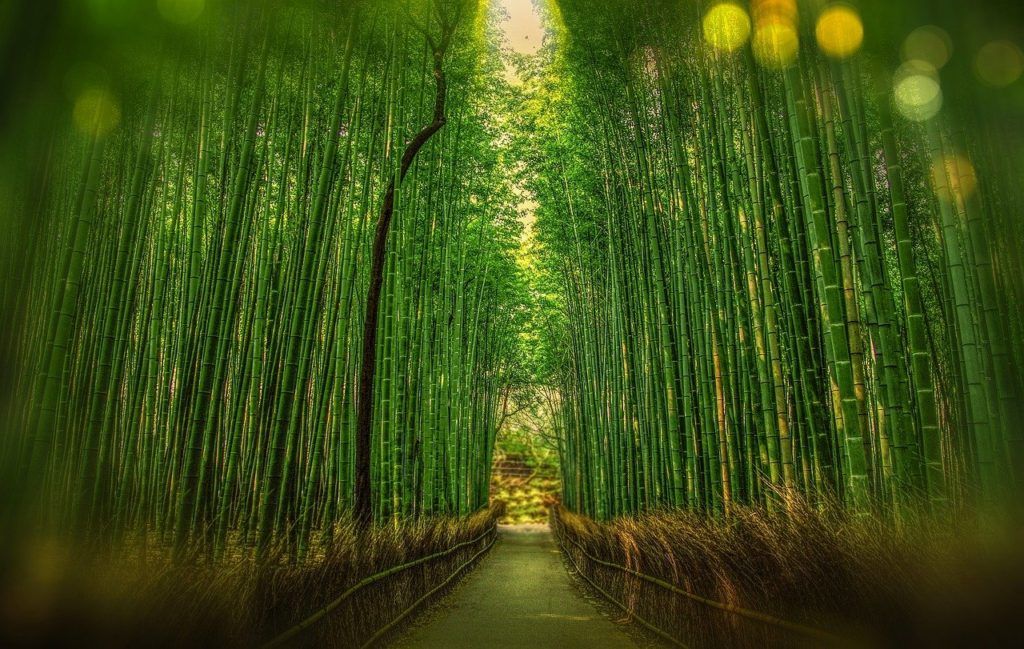
The best things to do in Kyoto will easily take 2-3 days to do justice to, so I recommend including 2 full days in Kyoto in your Japan itinerary.
Kyoto Temples
Kyoto is absolutely littered with incredible ancient temples, so this is really like 10 things to do in one. The Higashiyama area has the highest concentration of temples in Kyoto, many of which are connected by parks and walkways making it a beautiful area to explore on foot or by bicycle. Highlights of the Higashiyama temples include Nanzen-ji Temple, a traditional wooden temple in Northern Higashiyama, Kiyomizu-dera Temple, with its stunning hill top views of the city, and Eikando Zenrinji Temple with its beautiful gardens.
There’s temples all around Kyoto, and it would take several days to visit them all. The ‘don’t miss’ temples outside Higashiyama include Fushimi-Inari shrine which has thousands of red tori gates lining the mountain path and is one of the most visited sites in all of Japan, and Kinkaku-ji temple which features a massive Golden Pavilion surrounded by a tranquil reflecting pool and pretty gardens.
Most Kyoto temples are open from 9am to 4-5pm and have a small entry fee of around a few dollars.
The Philosopher’s Path
The Philosopher’s Path is a scenic path along a cherry tree lined canal with traditional houses and the odd temple, which is particularly gorgeous during cherry blossom season. The walk only takes 30-60 minutes and combines well with the Northern Higashiyama temples.
Nijo-jo Castle
Nijo-jo Castle is a grand 17th century castle complex and a UNESCO World Heritage Site. The castle grounds feature palaces and pretty gardens, and are surrounded by massive stone walls and medieval looking moats.
Nishiki Markets
Nishiki Market is a famous food market packed with small stalls that sell all kinds of local Japanese delicacies. The markets are pretty busy but lots of fun if you don’t mind crowds and like to get adventurous with sampling local foods (warning: you may not know what you’re eating half the time!). Nishiki Markets is around 30 minutes walk from Nijo-jo Castle, so is a great spot for a snack or lunch after exploring the castle.
Gion
Gion and Pontocho are cute historic Kyoto neighborhoods, filled with little alleyways, wooden shops, restaurants, canals and cherry blossoms. These districts come to life in the evening with a bustling (albeit crowded) atmosphere. Gion and Pontocho are also well known as the traditional Geisha areas in Kyoto, and you may be lucky enough to spot an elusive Geisha early in the evening.
Arashiyama and the Bamboo Grove
Arashiyama is a historic neighborhood west of Kyoto city. The best things to do in Arashiyama are to wander around the famous bamboo grove, walk across the landmark Togetsu-kyo Bridge, visit Tenryu-ji Temple and get lost in Arashiyama’s picturesque backstreets where you’ll find traditional wooden houses.
Kyoto Tour
Taking a Kyoto day tour is the best way to see the highlights of Kyoto in a short time, and to learn from a local guide along the way. If you like biking, I highly recommend taking cycling tour of Kyoto. Our guides was knowledgeable and interesting, and the tour had the perfect mix of Kyoto tourist attractions and local hidden gems.
Read More: Top 10+ Things to do in Kyoto | Kyoto 2 Day Itinerary
Kyoto Accommodation
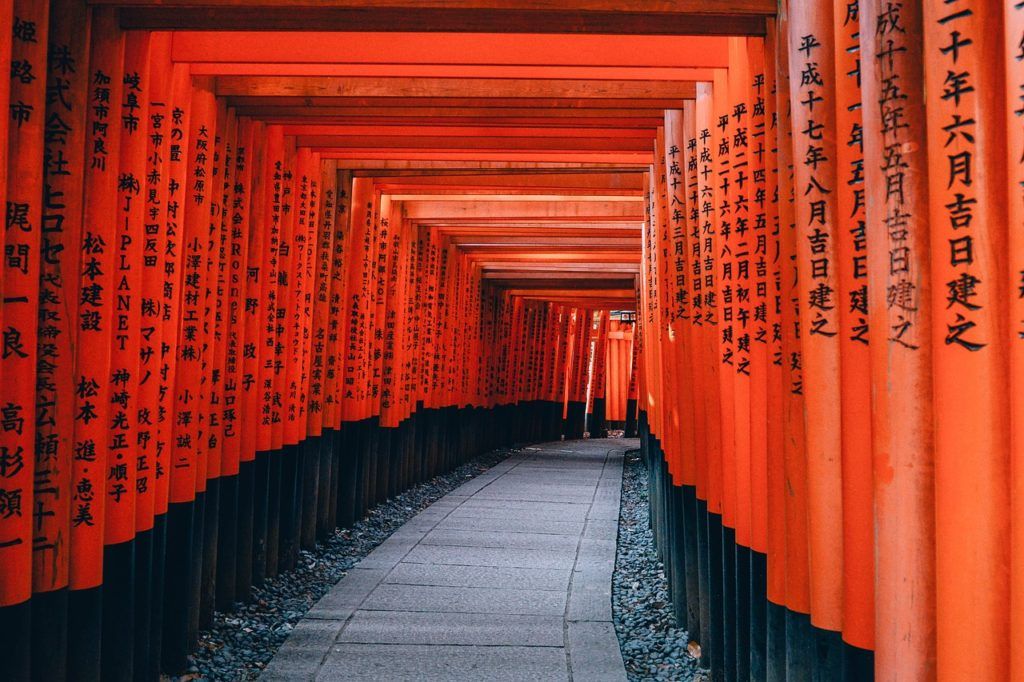
In Kyoto, aim to stay somewhere central with easy access to train stations, preferably near a JR station if you’re using the JR Pass. The areas around Gion and Southern Higashiyama are ideal if you want to stay somewhere with character, close to train stations and within walking distance to popular temples and nightlife. Alternatively, Kyoto Station is a good choice for the best access to public transport (both to explore Kyoto and to take the Shinkansen to Tokyo, Osaka and more), albeit with less character and sightseeing right on your doorstep.
Downtown Kyoto Hotel: The Royal Park Hotel Kyoto Sanjo is a well priced hotel and is centrally located, just a short walk from Gion, Nishiki Markets and Sanjo Station. It’s also relatively close to other top Kyoto activities, including Nijo Castle and the Southern Higashiyama Temples.
Check The Royal Park Hotel Rates: Booking.com | Agoda
Gion Traditional Ryokan: If you want to experience an authentic ryokan (Japanese guesthouse) in a great location, check out the charming Gion Ryokan Q-beh. This ryokan is well-reviewed, reasonably priced, and is located just a short walk from Gion and the Southern Higashiyama Temples.
Check Gion Ryokan Rates: Booking.com | Agoda
Kyoto Station Hotel: You can’t get much more convenient than Hotel Granvia Kyoto, which is literally in Kyoto Station. This is the perfect choice if you’re using Kyoto as a base for day trips or want minimal fuss when navigating public transport, as pretty much all trips will depart from Kyoto Station.
Check Hotel Granvia Kyoto Rates: Booking.com | Agoda
Day 7: Day Trip to Nara from Kyoto
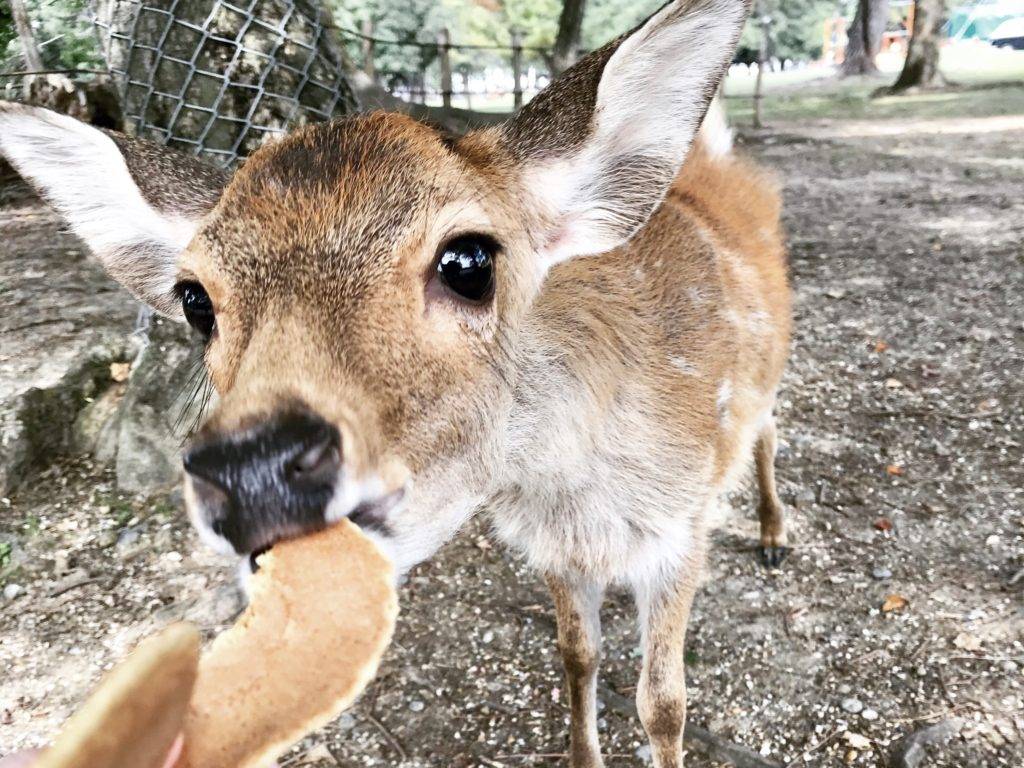
Today, take a day trip from Kyoto to gorgeous Nara, home to Japan’s famous free-roaming deer and picturesque ancient temples.
Option: Alternatively, visit Nara on Day 6 to break up your time in Kyoto and on trains.
How to Get from Kyoto to Nara
There are two train lines from Kyoto to Nara, which each take 35-45 minutes.
JR Nara Line: The express service on the JR Nara Line from JR Kyoto Station to JR Nara Station takes around 45 minutes. There is also a longer service by local train. The JR Nara Line line is included in the JR pass.
Kintetsu Nara Line: The express service on the Kintetsu Nara Line from Kintetsu Kyoto Station to Kintetsu Nara Station takes around 35 minutes. The Kintetsu Nara Line is not included in the JR Pass.
From Osaka: Alternatively, you can visit Nara from Osaka, approximately 35-50 minutes by train.
Nara Sightseeing
Nara is one of those towns that is an absolute delight to explore on foot, and it’s very doable to see the key sights in just one day. There’s two unique and must see attractions in Nara: super-cute free roaming deer and incredible ancient temples. The deer have made the streets, parks and temples of Nara their home, so you don’t need to visit any ‘special’ spot to see the deer – in fact, you can’t miss them as you’re walking around the temples and parks of central Nara!
During your day trip to Nara, make sure you see the following sites, which combine easily into a walking tour of Nara (just be sure to plan your route in advance!).
Nara Temples
Kofuku-ji Temple: Kofuku-ji is a temple complex not far from the Nara train station. Kofuku-ji is a fantastic place to get acquainted with Nara’s many temples, as it features a number of temples in different styles. Highlights include the interesting octagon shaped temple and the soaring five-storied pagoda.
Todai-ji Temple & Gate: The Nandaimon Gate of Todaiji is an imposing wooden gate that provides a rather impressive entrance to the main temple area of Nara. Todai-ji a very pretty temple, and is one of the more popular temples in Nara so can get busy.
Nigatsu-do Temple: Nigatsu-do temple is another gorgeous wooden Nara temple, and is worth visiting for its views over Nara alone. Expect to find lots of deer in this area, who may pester you for deer biscuits
Kasuga-Taisha Shrine: Kasuga-Taisha Shrine is a distinctive bright orange and white Shinto shrine, which is famous for its intricate and beautiful lanterns. Hundreds of bronze lanterns hang from the shrine buildings and hundreds more stone lanterns line the paths surrounding the shrine. It’s worth visiting several different temples and shrines in Nara, as they all have different styles and Kasuga-Taisha is no exception.
Nara Deer, Parks and Gardens
Deer are EVERYWHERE in Nara, and seem to find their way into every nook and cranny around the broader Nara Park area and temples. Be sure to pick up a few packs of deer biscuits for Y150 from the street side vendors, and feed the rather crafty and cute deer (trust me, they’ll sniff those bickies out in seconds!). Visit pretty Nara Park to have a break from temple sightseeing, and to make even more deer-friends.
Nara is not only about the temples and deer. If you have time and love traditional Japanese gardens, visit either the small but picturesque Yoshiki-en gardens (free entry) with its moss garden and a tea ceremony house, or the larger and spectacular Isuien gardens (Y900 entry) which is widely considered to be the most beautiful gardens in Nara.
Read More: Discover everything you need to know to take a day trip to Nara from Kyoto or Osaka, including a helpful Nara walking tour and route map.
Day 8: Osaka
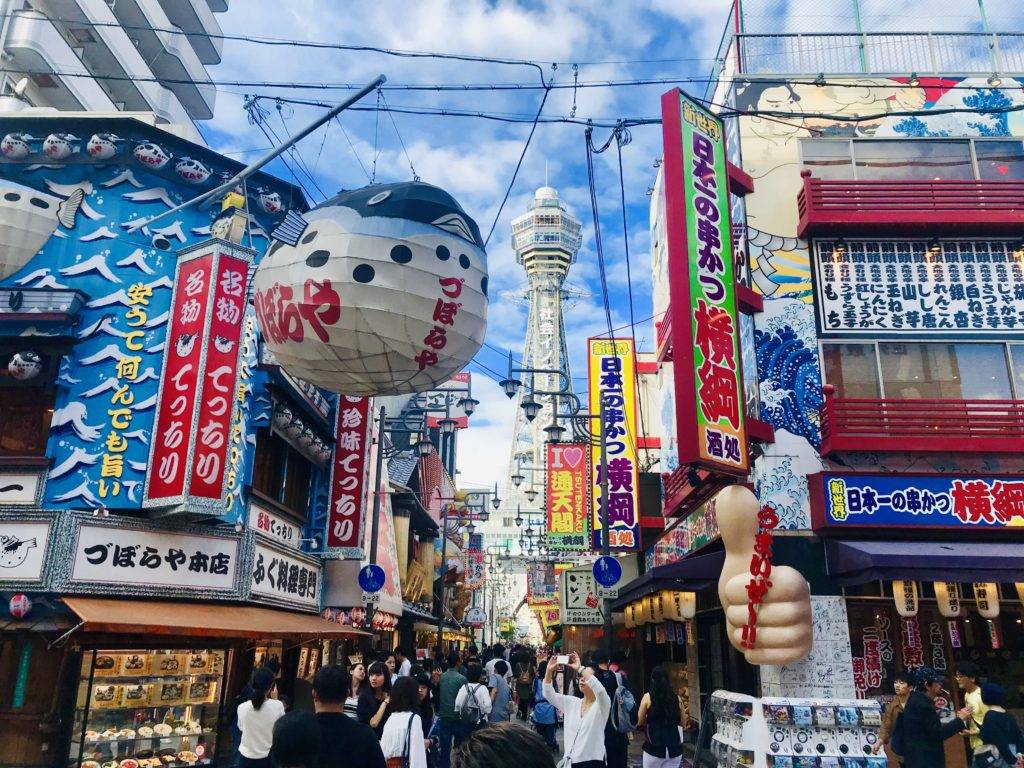
How to Get from Kyoto to Osaka
Osaka is just a hop, step and a jump from Kyoto. Take the train from Kyoto to Osaka, which is just 12 minutes travel on the high speed Shinkansen or 30 minutes plus on the ‘regular’ train.
Osaka Sightseeing
Osaka Castle
Osaka Castle is a quintessential Japanese castle, and a must-visit attraction in Osaka. The castle exterior is just gorgeous in its traditional style, and is surrounded by a moat and lovely grounds. Don’t miss Nishinomaru garden, which offers spectacular views of Osaka Castle through the trees. The castle interior is now a museum with some interesting history, and also features a viewing deck on the 8th floor.
Shinsekai
Shinsekai is one of the most vibrant neighbourhoods in Osaka, if a little cray-cray. The neighbourhood is filled with colorful streets, bright neon signs, pachinko arcades (Japanese pinball gambling), vending machine toys and the iconic Tsutenkaku Tower. Shinsekai is also famous for its tasty (and a little greasy!) kushikatsu, which are deep fried sticks with different meats, seafoods and vegetables with a tasty dipping sauce.
Dotonbori
Dotonbori is another famous, bright and chaotic neighbourhood in Osaka, which is best explored at night. In Dotonbori, walk along the river and take in the famous bright lit-up billboards including the ‘Glico man’. Be sure to sample some of Dotonbori’s famous street food, including the local delicacy of takoyaki balls – deep-fried ball-shaped snacks filled with mush-like ingredients, herbs and often octopus, mmmmmm. Dotonbori can be a little intense at night, with crowds of people, bright lights and often shoulder-to-shoulder foot traffic. If it all gets a little too much, simply duck back a few streets and explore the more relaxed neighbourhood of Shinsaibashi.
Tenshiba Park & Temples
Tenshiba Park is a tranquil park with some good cafes to chill out in. A number of temples and shrines are located around the park, including Horikoshi Shrine, Isshinji Temple, Tokokuji Temple and Shitennoji Temple. If you’ve come from Kyoto, you may be underwhelmed by these temples as they aren’t as grand as the spectacular temples you’ll find in Kyoto and Nara.
Observation Decks
There’s a couple of observation decks in Osaka, which will give you impressive views of the Osaka skyline. Depending on where your itinerary takes you, visit either the Harukas 300 Observation Deck (near Tenshiba Park) or the Umeda Sky Building.
Read More: Find out how to pull all the best activities into a one day itinerary for Osaka, including Osaka Castle, Shinsekai and Dotonbori.
Osaka Accommodation
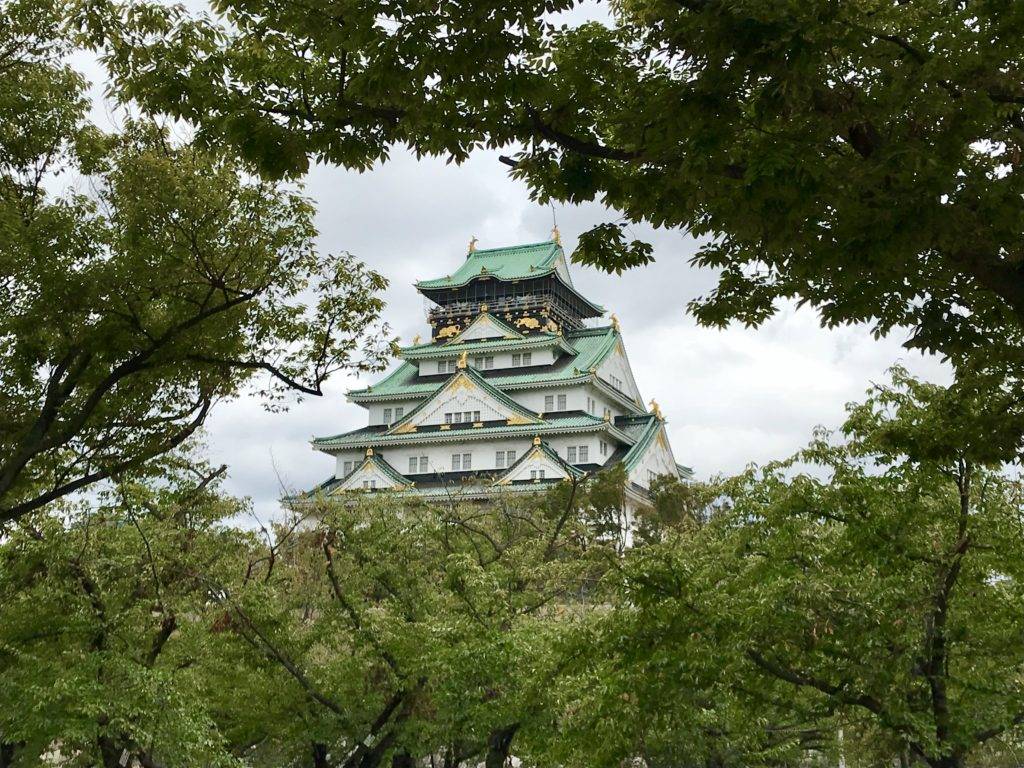
In Osaka, I suggest staying in Namba, Dotonbori or Shinsaibashi, which are neighbouring areas within walking distance to nightlife and incredible food, and with easy access to public transport. Alternatively, Umeda is another popular place to stay in Osaka, for easy access to the Shinkansen.
Namba: Namba is the best choice if you want to make the most of your JR Pass and avoid local lines, as it is close to JR Namba Station. If you like modern five star hotels, the Swissotel Nankai Osaka is reasonably priced for a slice of luxury and is located right above Namba Station.
Check Swissotel Nankai Rates: Booking.com | Agoda
Dotonbori: Alternatively, Dotonbori is right slap bang in the middle of the bright lights and nightlife, and is only 5 minutes walk from Namba Station. A great pick in Dotonbori is Hotel 88 Shinsaibashi, which is just a street back from the Dotonbori canal and very close to everything you need.
Check Hotel 88 Rates: Agoda
Shinsaibashi: My top pick is nearby Shinsaibashi, which has a local subway line and cute narrow streets lined with bars and restaurants. It’s also a little less chaotic than Namba and Dotonbori. I stayed at Hotel the Flag in Shinsaibashi which was a great choice – excellent location, modern, clean and a little funky, with comfortable rooms that are not quite as teeny tiny as others you’ll find in Japan!
Check Hotel the Flag Rates: Booking.com | Agoda
Umeda: Umeda is a major business district slightly north in Osaka, near JR Osaka Station where the Shinkansen departs from. You’ll also be close to the Umeda Ferris Wheel and Umeda Sky Building for some impressive city views. For a bargain in Umeda, you can’t go past the Ibis Osaka Umeda Hotel, where the standard is typical of an Ibis and rooms can go for under $100. If you want to luxe it up in old school opulent style, check out The Ritz-Carlton Osaka in Umeda, with all the facilities you’d expect from a luxury hotel including multiple restaurants, a club lounge and a spa.
Check Ibis Osaka Umeda Rates: Booking.com | Agoda
Check The Ritz-Carlton Rates: Booking.com | Agoda
Day 9: Day Trip to Hiroshima from Osaka
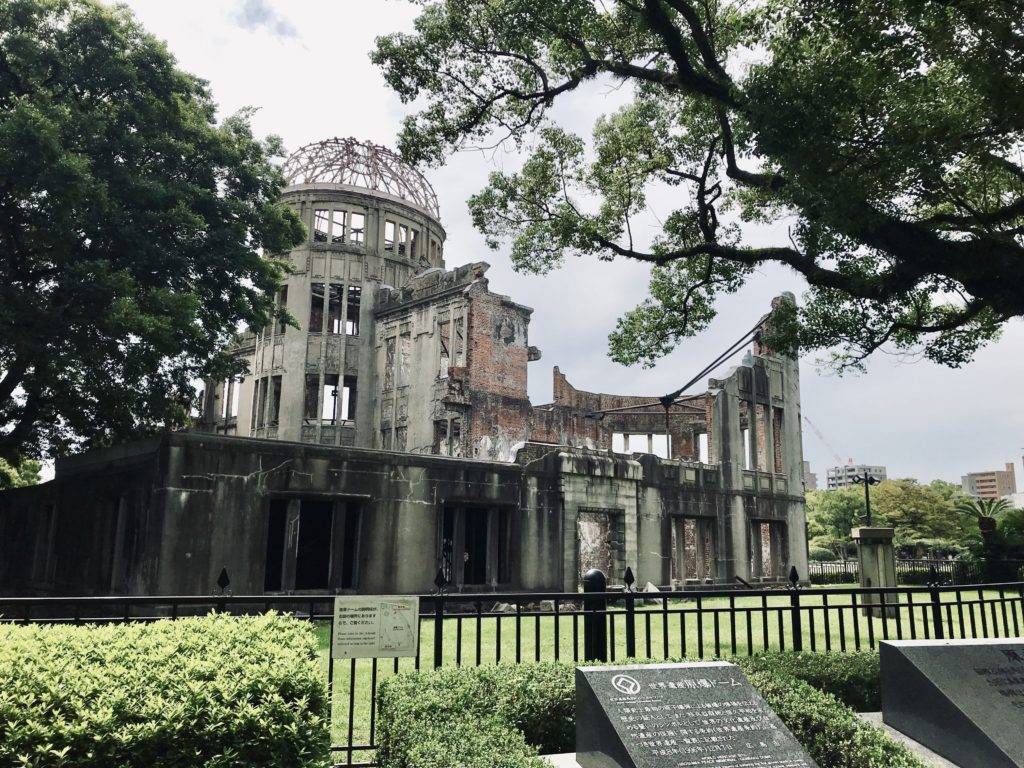
Hiroshima was largely destroyed by an atomic bomb in 1945, a history-shaping tragedy that has undoubtedly left an indelible scar on the city. The atomic bomb virtually flattened the city, killing around 60,000 people instantly, 140,000 by the end of 1945, and thousands more since then. Be mentally prepared for a long, harrowing and thought-provoking day.
How to Get from Osaka to Hiroshima
It’s relatively easy to get to Hiroshima from either Osaka or Kyoto, as the Shinkansen bullet train only takes around 1.5 hours each way. However, if you’re using the JR Pass, then it’s fastest to visit Hiroshima from Osaka.
From Osaka, take the Sanyo Shinkansen line from Shin-Osaka Station to Hiroshima Station. If you have a JR Pass, use the Sakura service which takes around 1 hour 30 minutes or the Hikari service which takes around 2 hours 15 minutes. If you don’t have a JR Pass, you can also take the slightly faster Mizuho or Nozomi train, which will get you to Hiroshima from Osaka in around 1 hour 25 minutes.
Hiroshima Sightseeing
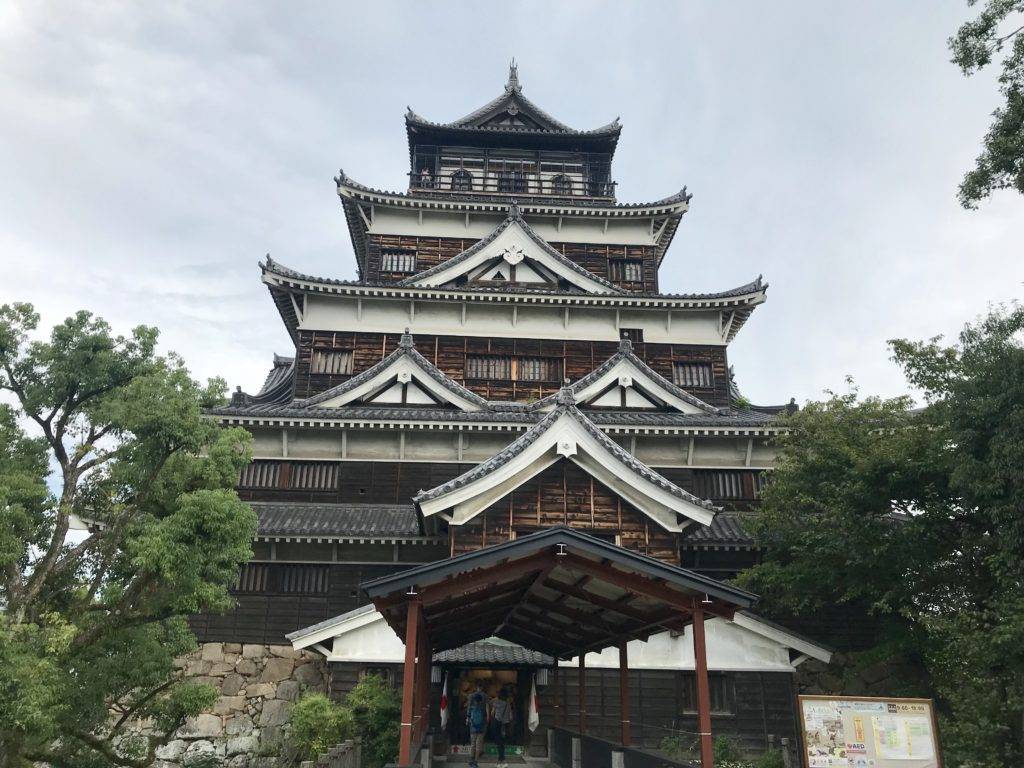
Take a self-guided walking tour of Hiroshima and explore the following key sites:
Hiroshima Atomic Bomb Dome
If you’ve seen photos of Hiroshima, it’s likely that they feature the Hiroshima Atomic Bomb Dome, an intensely visceral representation of the devastation caused by the atomic bomb. The A-Bomb Dome is located near the epicenter of the 1945 atomic bomb blast, and is the only structure still standing from 1945. Walk around the A-Bomb Dome’s perimeter on your way to the Hiroshima Peace Memorial Park, and ponder the enormity of this historic tragedy. Note that entry into the A-Bomb Dome is not permitted.
Hiroshima Peace Memorial Park
The Hiroshima Peace Memorial Park is the main Hiroshima memorial site, and includes several different memorials and a museum, so leave at least a couple of hours to explore. Highlights include the outdoor memorials, particularly the cenotaph where the peace flame burns eternally, the moving Memorial Hall of Remembrance with its 360 degree memorial made up of 140,000 tiles honouring the memory of victims, and the emotional Hiroshima Peace Memorial Museum which includes survivor testimonies, exhibits and messages of hope.
Hiroshima Castle
During your Japan trip, don’t miss visiting a traditional Japanese castle. Hiroshima Castle was once-upon-a-time a 16th century castle for the feudal lords, and has a really spectacular intricate wooden facade. Alas, like most buildings in its vicinity, Hiroshima Castle was destroyed during the 1945 atomic bomb and was later reconstructed.
Shukkeien Gardens
Shukkeien is a delightful example of a traditional Japanese garden, and is a good place to step back and reflect after being confronted by Hiroshima’s history. That said, the atomic bomb permeates all of Hiroshima, even the tranquil gardens. The original Shukkeien Gardens date back to the 1600s, but were destroyed in 1945 by the atomic bomb. The restored gardens feature a large pond with cute islands and bridges, where you can even feed colorful and ravenous koi fish.
Read More: Plan your day trip to Hiroshima from Kyoto or Osaka, including a walking tour and route map to cover all the attractions above.
Day 10: Osaka
On your final day in Japan, finish exploring any Osaka sites that you missed on Day 8 of your Japan itinerary. You can then end your trip by taking an international flight direct from Osaka, or returning to Tokyo on the Shinkansen for your international flight home.
Like It? Pin It!

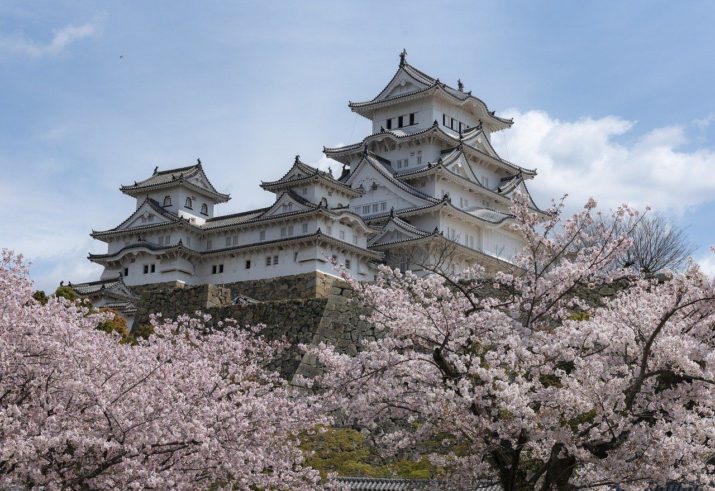
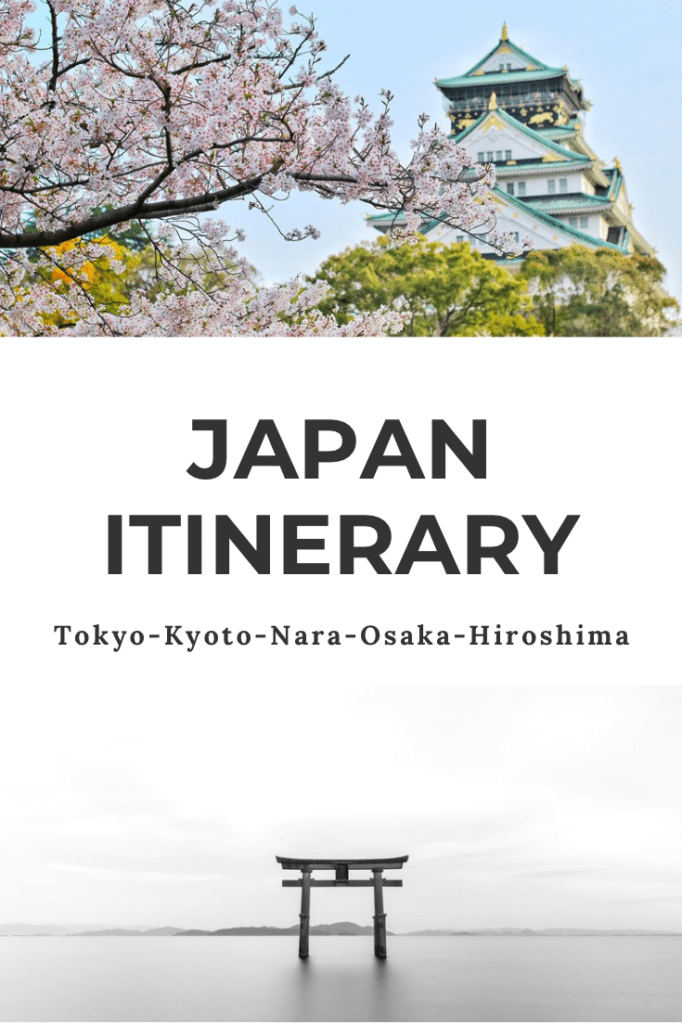
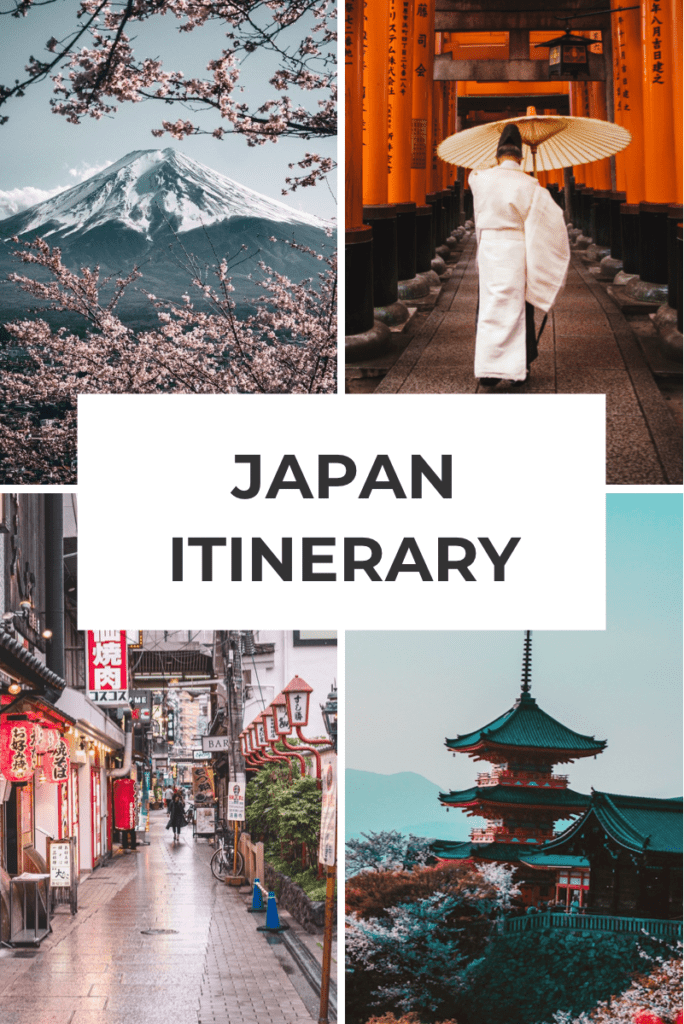
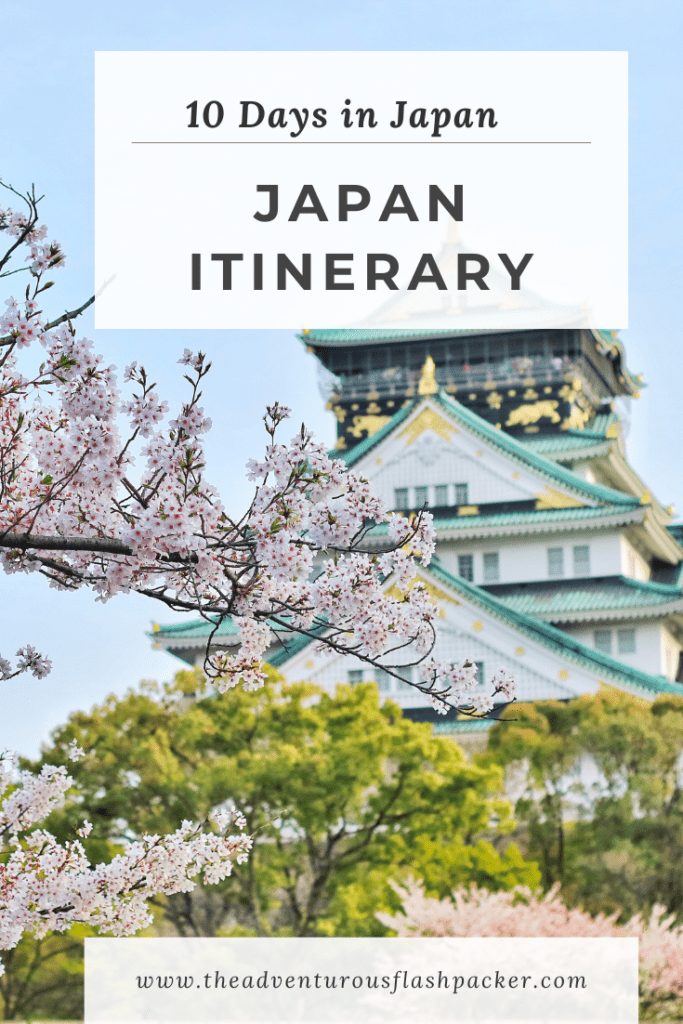
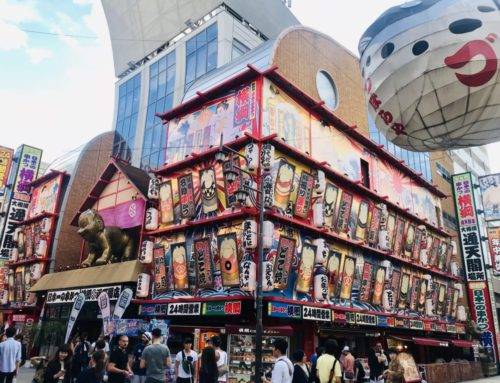
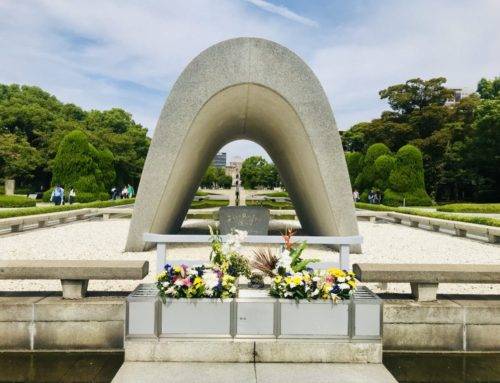
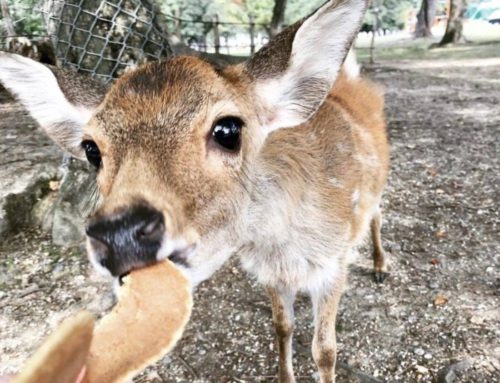
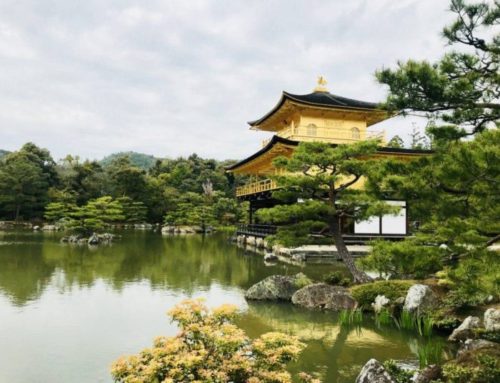
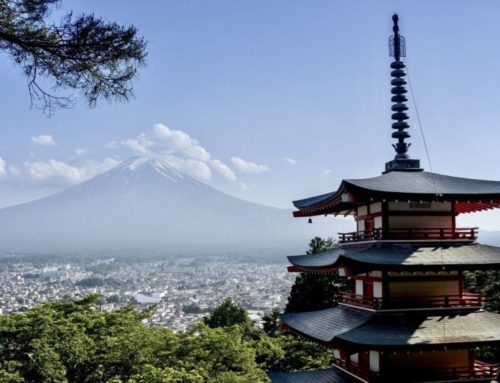
Leave A Comment